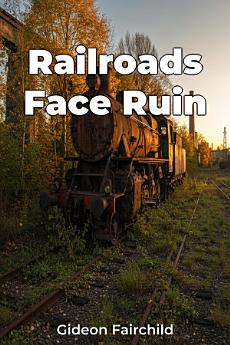Railroads Face Ruin
About this ebook
The book's approach is both historical and economic, offering vital context to understand the railroads' pivotal role before their decline. For example, the railroads' entanglement with industries like steel and coal demonstrates their central position in American infrastructure. The study unfolds in four parts, beginning with the golden age of railroads and progressing through the emerging challenges of the 1920s, the devastating impact of the Great Depression, and finally, the long-term consequences of the rail crisis. The analysis includes archival data from railroad company records, government reports, and contemporary accounts, providing a data-driven perspective on this critical period in economic history.
Ultimately, Railroads Face Ruin connects economic history with regulatory policy, showcasing how government interventions affected the railroad industry. By focusing on the freight sector during the interwar period, this book illustrates the interplay between transportation infrastructure, regulatory policies, and economic development, offering valuable lessons for understanding modern economic challenges and the pitfalls of over-reliance on single industries.







